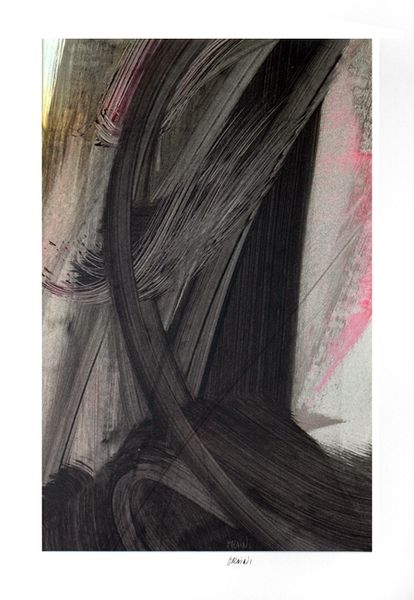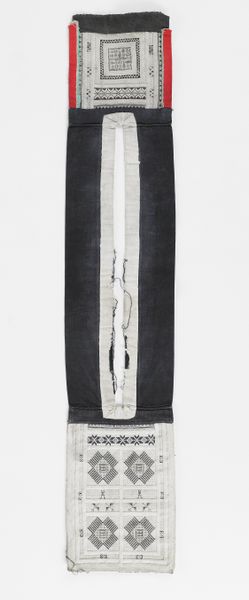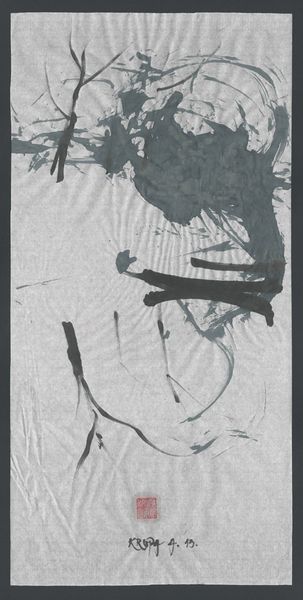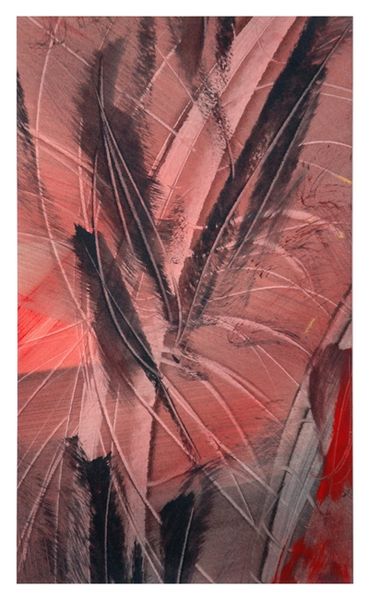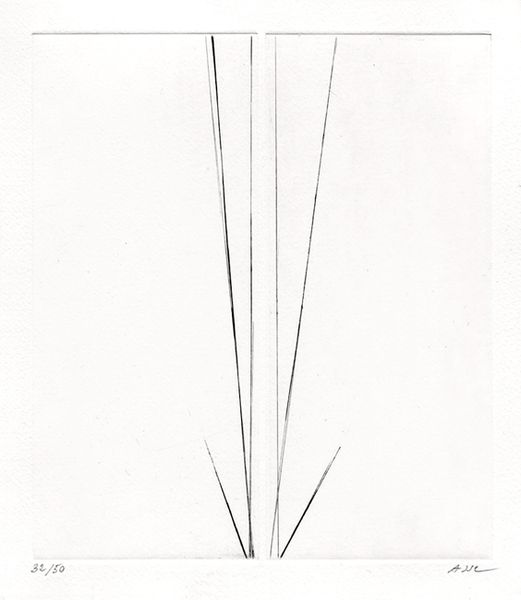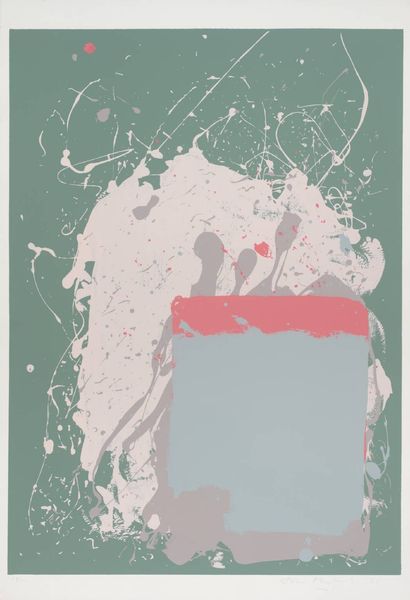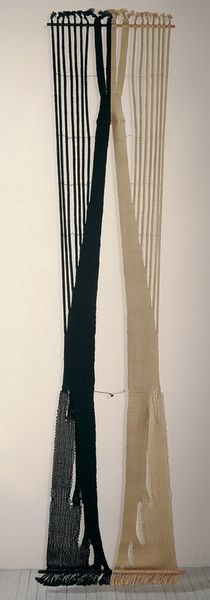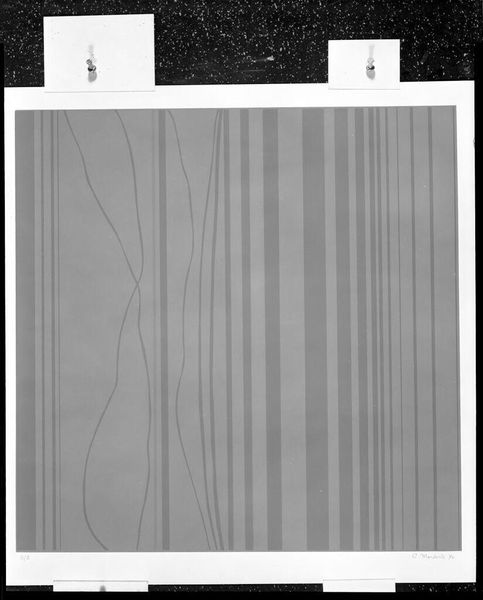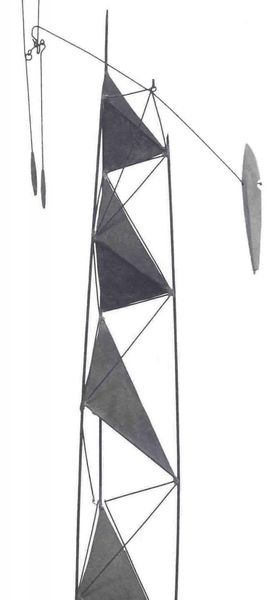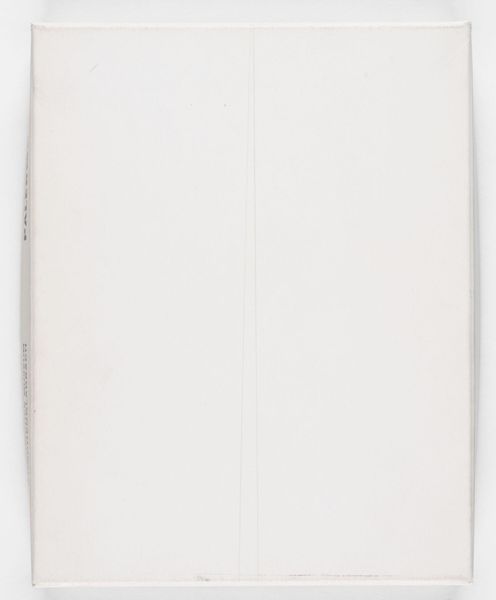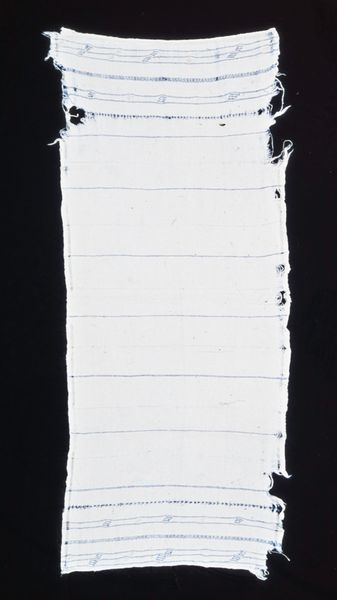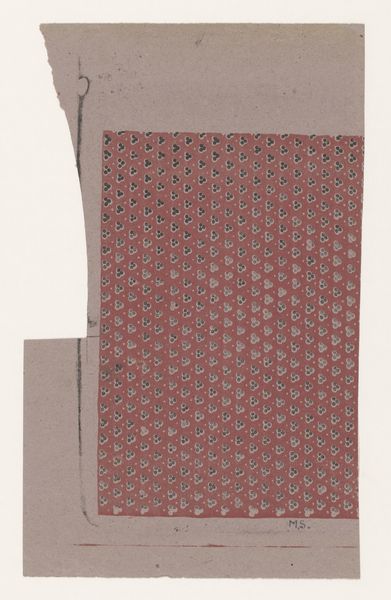
drawing, print
#
drawing
# print
#
geometric
#
abstraction
#
line
#
modernism
Dimensions: sheet: 104.78 x 58.42 cm (41 1/4 x 23 in.)
Copyright: National Gallery of Art: CC0 1.0
Editor: We're looking at Al Taylor’s "Coathanger III" from 1990, a drawing and print piece. It's a rather unusual composition; my initial reaction is that it's a playful deconstruction of everyday objects. What strikes you most about this work? Curator: What intrigues me most is the deliberate tension created through the juxtaposition of line and form. Observe how Taylor masterfully employs line – the delicate, almost whimsical lines depicting the coathangers, in contrast to the bold, rectangular form and painterly gesture at the top. Do you see how the upper section could be perceived as imposing a sense of abstract order and gravity? Editor: Yes, I notice the interplay. The hangers feel almost fragile, and that bolder section seems to weigh down on them. Are you seeing a commentary on objecthood through these contrasts? Curator: Perhaps. However, consider the formal relationships first. Note the repeating triangular shapes within the coathangers themselves. They are echoed, subtly, in the implied angles and structure of the more abstract form above. There’s a visual conversation occurring across the entire picture plane, irrespective of the depicted object. How do these contrasting styles relate, in your opinion? Editor: It’s almost as if the realistic and abstract forms are both trying to define space and volume on a two-dimensional surface using line and shape. It is quite ingenious to observe the repeating geometry! Curator: Precisely. The artist coaxes our eyes into identifying and relating these elements, which in itself is a study of human perception and art making. Editor: This has opened up a new perspective on how I see shape represented within abstraction and familiar objects. Curator: Indeed. It allows us to perceive the basic construction of vision as its core mechanism, across diverse aesthetic forms.
Comments
No comments
Be the first to comment and join the conversation on the ultimate creative platform.
